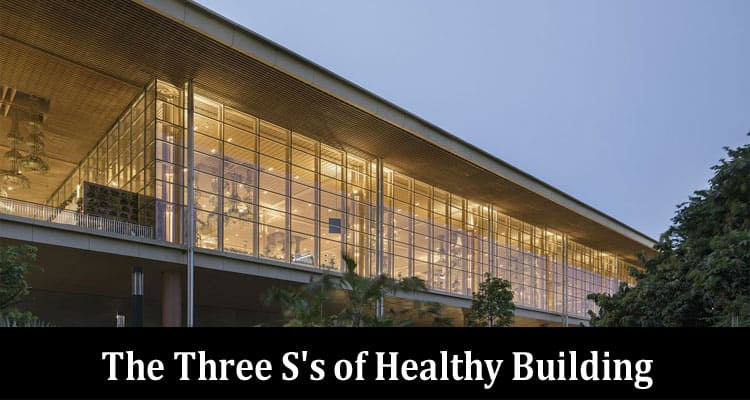In the ever-evolving world of construction and architecture, the concept of a healthy building has gained significant traction. As we become more attuned to the impact of our surroundings on well-being, architects, builders, and homeowners alike are embracing the three S’s—Sustainable, Safe, and Sound—as pillars of a healthier built environment.
The Rise of Healthy Building Practices
Creating spaces that promote well-being is not a new concept, but the integration of sustainable, safe, and sound principles has elevated the notion of a healthy building to new heights. The aim is to design and construct spaces that not only
fulfil their intended purpose but also contribute positively to the health of occupants and the environment.
The Significance of Healthy Buildings
As awareness grows regarding the impact of indoor environments on physical and mental health, the demand for healthy buildings has surged. Beyond aesthetics and functionality, people are prioritising spaces that support their overall well-being.
Sustainable Building Practices
- Definition of Sustainable Building
Sustainable building revolves around the use of environmentally responsible materials and construction methods. It considers the complete life cycle of a building, from design to operation and eventual decommissioning.
- Incorporating Sustainable Materials
Builders are increasingly opting for eco-friendly materials, such as recycled steel, reclaimed wood, and energy-efficient glass. These choices reduce the environmental footprint and also contribute to a healthier indoor environment.
- Energy Efficiency and Conservation
A cornerstone of sustainable building is energy efficiency. From smart lighting systems to solar panels, integrating energy-saving technologies minimises the environmental impact and reduces operational costs.
- The Keyword: Healthy Building
In every aspect of sustainable building, the keyword “healthy building” plays a pivotal role. From the choice of materials to the construction process, prioritising health is a guiding principle.
Safe Building Practices
- Ensuring Structural Integrity
Safety is a paramount concern in healthy buildings. Adherence to building codes, structural integrity, and the use of high-quality construction materials are fundamental to creating a safe environment for occupants.
- Indoor Air Quality
Poor air quality indoor can have detrimental effects on health. Healthy buildings prioritise ventilation systems, air purifiers, and the use of low-emission materials to enhance the quality of the air inside.
- Minimising Hazards
Safe building practices include identifying and mitigating potential hazards, such as mould, asbestos, and volatile organic compounds (VOCs). Regular adherence and inspections to safety standards are crucial in this regard.
Sound Building Practices
- Acoustic Design
The soundness of a building goes beyond its physical structure. Acoustic design plays a big role in creating spaces that are conducive to concentration, relaxation, and overall well-being. Proper insulation and strategic design elements contribute to a peaceful environment.
- Noise Reduction Strategies
Implementing noise reduction strategies, such as sound-absorbing materials and thoughtful architectural design, enhances the sound quality within a building. This is particularly important in urban environments where external noise can be a significant challenge.
- Creating Tranquil Spaces
In healthy buildings, the sound design extends to outdoor spaces. Landscaping, water features, and strategic placement of structures contribute to creating tranquil environments that positively impact mental health.
The Three S’s in Harmony: A Holistic Approach
- Integration of Sustainable, Safe, and Sound Principles
The true essence of a healthy building lies in the seamless integration of sustainable, safe, and sound principles. When these elements work in harmony, the result is a space that not only looks and feels good but actively contributes to the well-being of its occupants.
- Striking a Balance
Balancing the three S’s requires collaboration among architects, builders, and environmental experts. This collaborative approach ensures that each aspect is considered without compromising the overall vision for the building.
Partnering with Reputable Energy Brands
As we embrace the three S’s of healthy building, it’s essential to recognise the role of energy in sustaining this vision. Partnering with reputable energy brands offers numerous benefits, including access to clean and sustainable energy sources. By aligning with these brands, builders and homeowners contribute to a better future while they enjoy reliable and environmentally friendly energy solutions.
Sustainable, safe, and sound—these three principles are transforming the landscape of building design and construction. The emphasis on creating healthy buildings not only reflects a shift in priorities but also establishes a new standard for the industry. As we continue to prioritise well-being in our built environments, the three S’s stand as a testament to our commitment to a healthier and more sustainable future.


